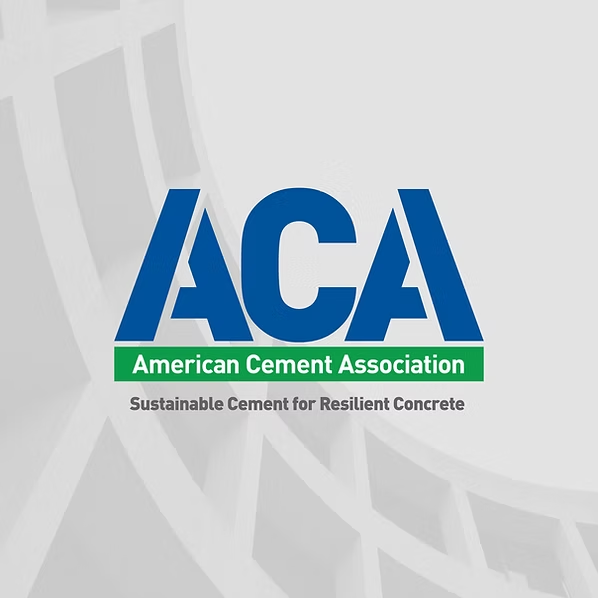10.5+ million metric tons of carbon avoided since 2021
HOW
America’s cement
industry is
cutting emissions
America’s cement
industry is
cutting emissions

50
State Departments of Transportation (DOTs) now accept the use of portland-limestone cement (PLC). PLC reduces emissions by up to 10%.

U.S. Army Corps of Engineers
revised building specifications to include PLC.

60%
of the total cement consumed in the U.S. is lower-carbon blended cement

77%
of ACA member companies use alternative and/or renewable fuels to reduce energy-related carbon emissions.

16%
of the cement industry’s energy consumption comes from alternative fuels.

6
Carbon Capture Utilization and Storage (CCUS) Projects – total investment of $2 billion.
On behalf of the industry, the American Cement Association (ACA) has developed a Roadmap to Carbon Neutrality, which identifies the targets, timelines, technologies, and supporting policies needed to achieve and potentially accelerate the goal of decarbonization.
The ACA represents the majority of U.S. cement manufacturers. ACA member companies are committed to achieving carbon neutrality across the cement and concrete value chain.
The cement and concrete value chain represents the entire life cycle of the product, from the manufacture of cement to its final reuse, recycling, and capability to absorb CO2.
Why carbon neutral now?
Growing cities require cement and concrete to build safe and durable infrastructure. We must meet this demand and also ensure we’re reducing emissions as production increases.
A life cycle approach across the value chain
We cannot consider any single process, product or technology in isolation. We must work together across the entire value chain to achieve lasting sustainability in our nation’s built environment.
The policy needed for change
Many of the opportunities in our plan require help from policymakers and regulators.

Reducing Our Carbon Footprint
Reducing Carbon at the Cement Plant
The biggest changes begin early – at the cement plant. Be it replacing fossil fuels with lower carbon options, optimizing new cement mixes that emit less carbon, or using energy more efficiently.
Learn More
Reducing Carbon When Making Concrete
Concrete is the product that we experience every day. There are opportunities to reduce embodied carbon by optimizing mixes and using renewable energy.
Learn More
Reducing Carbon At the Construction Site
The wider construction industry can benefit from the progress made by our industry and the actions in our Roadmap – from trucks switching to electric fleets to architects and designers thinking differently about how they build.
Learn More
Carbon Uptake
A little known fact about concrete – it can absorb carbon from our atmosphere. Much like a live tree, carbon dioxide (CO2) is absorbed and then permanently sequestered, even when demolished later on. Current estimates show that up to 10% of carbon emitted during the process of creating cement and concrete is reabsorbed.
Learn More
